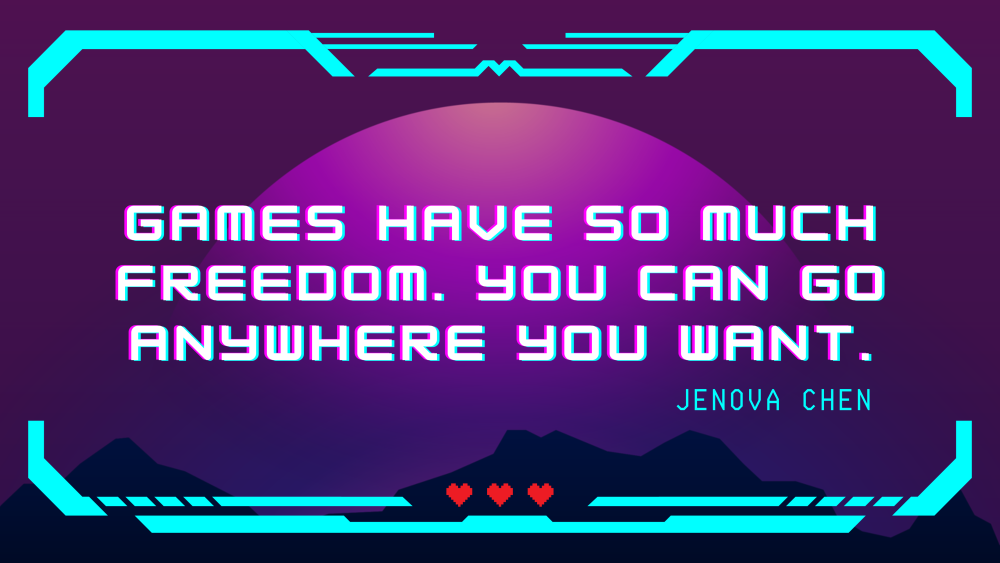Participatory culture, characterized by low barriers to artistic expression and civic engagement, is increasingly vital in a network society. This is true for media literacy as well, which involves critical engagement with media content and environments and exercising participatory culture all the way.
Today, video games (VG) have the potential to facilitate the acquisition of cultural knowledge and develop intercultural and socio-cultural literacies, cultural and self-awareness, and the cultural understanding of different geopolitical spaces. Moreover, through interactive storytelling and collaborative problem-solving, VG offer environments that cultivate skills such as critical thinking, creativity, and communication, essential for success in the 21st century.
This article examines the significance of VG in modern culture and their role in fostering participatory culture (PC) and enhancing media literacy (ML). It centers on commercial VG within the hardcore gaming sphere, highlighting their distinct impact on PC and ML, as opposed to the roles typically played as casual entertainment or educational games."
Understanding participatory culture
How does PC influence individual and community engagement online?
What are the civic implications of PC in digital environments?
Henry Jenkins, the pioneering media scholar and Provost Professor at the University of Southern California, defines PC as a culture where individuals are not only consumers but also producers, engaging in collaborative and creative expressions through digital platforms. PC has its roots in the digital revolution, which democratized the creation and dissemination of information, allowing everyday users to produce and share content globally. Jenkins emphasizes that PC involves more than just opportunities for engagement, but it necessitates a supportive environment where contributions are valued and meaningful.
 Illustration made by the author of the article with Canva Pro
Illustration made by the author of the article with Canva Pro
PC is characterized by relatively low barriers to artistic expression and civic engagement. It is facilitated by easy access to digital tools that support creation and sharing. This culture is also marked by a strong sense of community and mentorship, where experienced members guide novices, and everyone can contribute in a meaningful way. The collaborative nature of these interactions enhances the development of new skills and knowledge, which fosters a vibrant, creative community.
The civic implications of PC are profound, particularly in online communities like fandoms and wikies (that’s right - Wikipedia). What's more, civic engagement and the potential for social change through PC are foundational elements of participatory democracy. Jenkins argues that PC allows individuals to become more engaged citizens, as they are not only consuming content but also creating and discussing it, which enhances their understanding of civic issues. This active engagement can lead to a more informed and responsive citizenry, capable of influencing public discourse and policy.
Professor Kurt Squire, who is fascinated by the potential computer games have for enriching young minds, has extensively explored their educational potential, focusing on how VG can foster civic engagement and create impactful learning experiences. Another researcher, James Paul Gee, whose work has contributed to discourse analysis, sociolinguistics, and the study of VG and learning as a source of insights into how language and identity function in society, further elaborate on this. Squire's research suggests that gaming communities can serve as examples of PC in action, while Gee's work, and particularly his research on affinity spaces and their role in learning and social organization, emphasizes the importance of participation, collaboration, and community engagement.
Through these frameworks, PC not only supports individual creativity and learning but also fosters a more engaged and informed citizenship, crucial for the health of any democratic society.
The role of media literacy in participatory culture.
How does ML empower users in digital environments?
What are the challenges and opportunities presented by ML in the context of PC?
ML is broadly understood as set of skills that enable individuals to access, analyze, evaluate, and create messages across a variety of contexts and forms. It has been a critical component of societal engagement and democratic participation not only in the current digital age but also throughout the 20th century. Media literacy emerged as a concept and necessity precisely in the era of mass media — radio, television, and print media — which evolved and expanded its influence over public life, becoming dominant forces in shaping public opinion and cultural norms.
Now, as the media is omnipresent and defines our perceptions, behaviors, and relationships, ML plays an even more crucial role. ML empowers users to discern the credibility of information, recognize bias, and understand the intent behind media messages, thus protecting them from manipulation and enabling them to participate as informed citizens.
ML fosters skills that are essential to navigating the complex media landscape. It encourages users to critically assess the vast amounts of information they encounter and to engage with media content responsibly. This involves understanding the techniques used by media producers to attract attention, the target audience, the potential for varied interpretations, and the purpose behind the content. ML enables users to critically engage with (digital) media content, recognizing the persuasive intent of advertisements, to look through its constructed nature, even when many of the most watched programs are pretending to be reality shows, and distinguishing between fact and opinion in news sources.
It also involves ethical considerations, such as respecting intellectual property rights and considering the impact of one's own media creations on others. By applying these skills, individuals , are empowered to become active participants in digital environments, contributing to the collective intelligence and fostering a PC that values diverse perspectives and collaborative problem-solving.
Through the lens of ML, users are not just passive consumers, but active contributors to the media ecosystem. As ML encompasses both technical skills, motivation and a proactive approach, media literate citizens are equipped both with the skills, but also the drive and attitude to navigate, interpret, and influence the media landscape. This empowerment in digital spaces is essential for the development of a PC that thrives on informed engagement and critical discourse.
Video Games as platforms for participatory culture and media literacy.
How do VG facilitate the development of PC?
In what ways do VG serve as a unique medium for practicing ML?
The place of VG in culture is constantly changing and being redefined. Are VG entertainment or art? Should they serve a specific function, such as to foster the skills that are needed in real life or to shape virtual realities? The titles and series of individual VG’s stand out because of their innovation and the ways in which they transcend the previously accepted genre frameworks to become the foundation upon which those after them will stand, including not just game producers, but also producers of all other forms of media content. These games are distinguished not only by their great economic success and popularity, but also by their tangible impact on culture, which cannot and should not be belittled or judged as unscientifically, in manifestation of techno- or moral panic.
VG are defined by their interactivity, which allows players to influence the game's narrative and outcome, making them active participants rather than passive observers. This interactivity is complemented by immersive environments that engage players deeply, making the experience more impactful than traditional media forms. The narrative complexity of VG also plays a crucial role, as they often involve intricate storylines that require players to make decisions that can have moral and ethical implications. These features not only enhance entertainment but also serve as powerful tools for learning and engagement, fostering skills such as problem-solving, strategic thinking, and empathy.
 Illustration made by the author of the article with Canva Pro
Illustration made by the author of the article with Canva Pro
The storytelling in VG is unique because it is dynamic and player-driven. Players are not just recipients of a story but its co-creators, which enhances their understanding of narrative structures and character development. Games like The Last of Us, Life is Strange, or the featured in Polish high school curriculums This War of Mine demonstrate how player choices can lead to different narrative outcomes, thereby enhancing ML skills. This active participation helps players understand the consequences of their actions within a narrative context, promoting a deeper engagement with the content and fostering critical thinking.
Several VG exemplify the use of PC and ML to develop critical skills and civic engagement. For instance, Minecraft serves as a sandbox for creativity and collaboration, allowing players to build environments and solve problems together. Papers, Please is another example where players take on the role of an immigration officer, making decisions that can have significant moral implications, thereby fostering empathy and ethical reasoning.
Commercial games like these not only entertain but also educate and provoke thoughtful engagement with complex issues, which demonstrates the potential of VG to influence society positively.
Titles characterized by rich narratives and complex interactions challenge and engage players in ways that can significantly enhance critical thinking and collaborative skills. Furthermore, when cross-curriculum ML education is strategically combined with game-based learning as a pedagogical practice, the potential for cultivating these competencies is amplified. This synergy not only reinforces the educational value of VG but also positions them as a formidable tool in the development of methodological approaches to 21st-century learning, fostering a generation of life-long learners who are not only tech- and media-savvy but also adept at navigating and shaping the post-digital world — where the boundaries between the digital and physical realms become increasingly blurred.
Background illustration: The Art of Video Games 2012 - Exhibit at the Smithsonian American Art Museum (March 16, 2012 - September 30, 2012; Source: The Art of Video Games 2012; Author: Blake Patterson from Alexandria, VA, USA Published on Wikimedia Commons
This article was published in partnership with Funky Citizens
